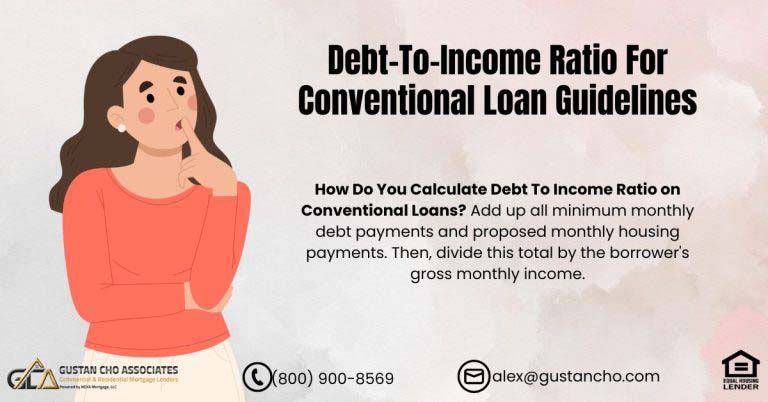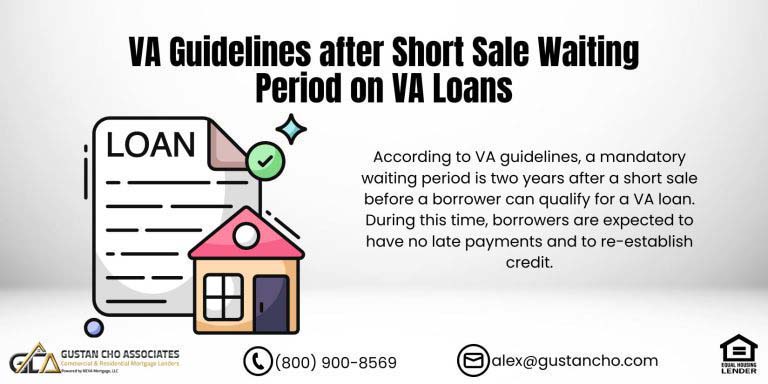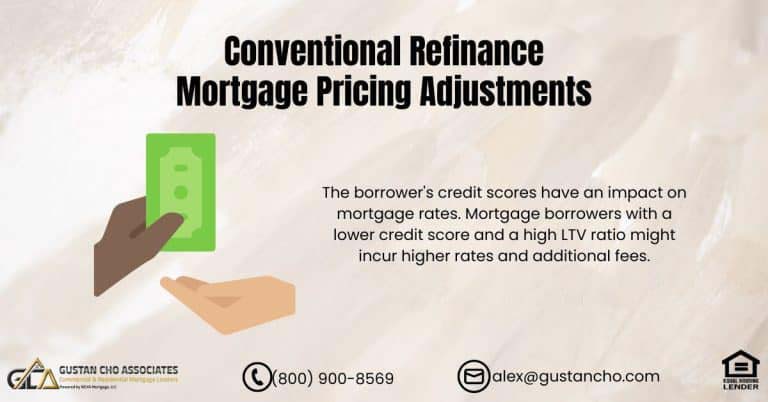Lender Overlays on Collection Accounts: What Borrowers Need to Know in 2025
Many homebuyers feel stuck when they apply for a mortgage and get denied because of old collection accounts. Maybe the bank told you, “Pay off all collections first.” Or maybe they said you don’t qualify because you still have charge-offs on your credit.
You know what? You can still get a mortgage even if you have collection accounts. The issue isn’t usually with the federal loan rules; it’s more about the extra requirements lenders put on top of that.
In this guide, we’ll explain everything you need to know about lender overlays on collection accounts, the actual FHA, VA, USDA, Fannie Mae, and Freddie Mac guidelines, and how to get approved with a lender like Gustan Cho Associates that does not have overlays.
What Are Lender Overlays on Collection Accounts?
The term lender overlays on collection accounts means extra rules added by banks, credit unions, and mortgage lenders on top of the standard government and conventional loan requirements.
FHA guidelines state that borrowers are not required to pay off old medical collection accounts. However, it’s important to note that individual lenders may impose additional requirements, known as lender overlays. For instance, a bank might insist that these medical collections be paid off before approving your loan, despite the FHA’s more lenient stance.
This creates confusion for borrowers. One lender says “yes,” another says “no,” and you’re left wondering if you can buy a home.
Can I still get a mortgage with collection accounts?
Yes! Many banks deny you, but we approve loans with no overlays.
Do FHA Loans Require Paying Off Collection Accounts?
Borrowers often ask: “Do I need to pay off collections to get an FHA loan?”
The answer: Not always.
- Medical collections: FHA does not require a payoff, no matter the balance.
- Non-medical collections: If your total unpaid balance is $2,000 or more, FHA requires lenders to calculate 5% of that balance as part of your monthly debt-to-income ratio (DTI).
- Example: $5,000 in collections = $250 added to your monthly DTI, even though you’re not making that payment.
But here’s the key: FHA does not force you to pay off those accounts. Many banks and credit unions only add that rule because of their lender overlays on collection accounts.
How Do VA and USDA Loans Handle Collection Accounts?
Lender overlays on collection accounts can also affect VA and USDA loans.
- VA loans generally do not require paying off old collections if the underwriter believes you can repay the loan responsibly.
- USDA loans may consider unpaid collections a negative factor, but payoff is not always required.
Still, many lenders impose overlays and require payment of all collections, even when VA or USDA guidelines don’t require it.
This is why many veterans and rural homebuyers are turned away by big banks, even though they technically qualify under federal rules.
How Do Conventional Loans Treat Collection Accounts?
Fannie Mae and Freddie Mac (conventional loans) are more flexible than most borrowers realize. They generally do not require paying off collection accounts before getting approved.
Conventional loans frequently encounter overlays, as different lenders have varying collection requirements. Some may mandate that all collections be paid in full before approving the loan, while others might impose stricter minimum credit score thresholds if there are any unpaid collections.
Additionally, many lenders may lower your allowable debt-to-income (DTI) ratio if your credit report indicates the presence of collections.
That’s why so many conventional borrowers hear “You’re denied until you pay everything off.”
At Gustan Cho Associates, we approve conventional loans using only the true Fannie Mae and Freddie Mac rules—no overlays.
Why Do Lenders Add Overlays?
Banks and credit unions add overlays to reduce their risk.
Even though FHA, VA, USDA, and conventional guidelines allow certain credit issues, lenders want to protect themselves from possible defaults. They often add stricter rules like:
- No unpaid collections allowed.
- Higher credit score minimums.
- Lower maximum DTI caps.
- Extra verification for income and assets.
This is why one borrower can be denied by a big bank but approved by another lender that follows only agency guidelines.
Why did another lender deny me for collections?
Most banks add overlays—extra rules on top of FHA, VA, USDA, or Conventional guidelines.
Is it Possible to Qualify for an FHA Loan if I have Unpaid Collections?
Yes—you can. FHA does not require payoff of medical collections and only calculates 5% of non-medical balances into your DTI.
If a bank says you must pay off all collections first, you’re dealing with a lender overlay. The solution is to find a lender with no overlays on collection accounts, like Gustan Cho Associates.
What If My Collection Balance Is Very High?
High outstanding collection balances can impact your debt-to-income (DTI) ratio. For instance, if you have $20,000 in unpaid collections, the Federal Housing Administration (FHA) mandates that lenders account for 5% of that amount, which equates to $1,000, when calculating your monthly DTI. This is important to note because, although you may not be making a payment of $1,000, it is still considered when determining your qualifying income.
Solution: You can set up a payment agreement with the creditor. If the creditor agrees to $100 monthly, FHA guidelines allow the underwriter to use that $100 instead of $1,000.
Many lenders will still deny this unless the account is paid in full. That’s another example of lender overlays on collection accounts.
Do I Need to Pay Off Medical Collections for Mortgage Approval?
No—FHA excludes medical collections completely. They do not need to be paid off.
But again, many lenders will require it as part of their overlays. If your lender demands payoff of medical collections, it’s time to shop for another lender.
How Gustan Cho Associates Helps Borrowers With Collections
At Gustan Cho Associates, we have no lender overlays on collection accounts. That means:
- We approve FHA, VA, USDA, and conventional loans using only proper agency guidelines.
- We do not force you to pay off old medical or non-medical collections unless the guidelines require it.
- We specialize in helping 80% of our clients who are denied by other lenders.
If you’ve been told you can’t qualify because of collections, you may still be eligible with us.
Why Did One Bank Deny Me and Another Approve Me?
Because lenders use overlays differently. One lender may require all collections paid, while another follows FHA’s rule that only counts 5% of non-medical balances into DTI.
This is why working with a no-overlay lender like Gustan Cho Associates is important.
Steps Borrowers Can Take If You Have Collections
- Don’t panic if one lender denies you. It may just be their overlays.
- Get a copy of your credit report and understand which accounts are medical vs. non-medical.
- Calculate the DTI impact using FHA’s 5% rule for non-medical balances.
- Consider a payment plan for large collections to lower the DTI calculation.
- Work with a lender without overlays to avoid unnecessary denials.
Can I Buy a House With Collections in 2025?
Yes. In fact, thousands of borrowers with unpaid collections close on homes every year. The key is finding a lender who follows agency rules and does not add overlays.
With Gustan Cho Associates, you can move forward with confidence even if you have collections or charge-offs.
Final Thoughts on Lender Overlays on Collection Accounts
If you’ve been denied a mortgage because of collections, don’t give up. The denial often comes from lender overlays on collection accounts, not federal loan rules.
- FHA, VA, USDA, and conventional loans all allow certain collections.
- Medical collections are completely excluded from FHA.
- Non-medical collections over $2,000 are counted at 5% toward DTI, but payoff is not required.
- Payment agreements can lower the impact of large balances.
At Gustan Cho Associates, we approve loans that big banks deny every day. Our no-overlay policy means we follow the official guidelines—nothing more, nothing less. If you’ve been told “no,” let us give you a second opinion. You may already qualify.
Borrowers who need a five-star national mortgage company licensed in 50 states with no overlays and who are experts on lender overlays on collection accounts, please contact us at 800-900-8569, text us for a faster response, or email us at alex@gustancho.com. The team at Gustan Cho Associates is available 7 days a week, on evenings, weekends, and holidays.
Who offers mortgages without overlays on collections?
Gustan Cho Associates specializes in no overlay lending nationwide.
Frequently Asked Questions About Lender Overlays on Collection Accounts:
Q: What are Lender Overlays on Collection Accounts?
A: Lender overlays on collection accounts are extra rules some banks add on top of FHA, VA, USDA, or conventional loan guidelines.
Q: Do I Need to Pay Off Collections Because of Lender Overlays on Collection Accounts?
A: Not always. FHA and other programs don’t always require payoff, but some lenders do because of their overlays.
Q: Why Did One Bank Deny Me Because of Collections While Another Said Yes?
A: That happens because of lender overlays on collection accounts. Some lenders add stricter rules, while others don’t.
Q: Do FHA Loans have Lender Overlays on Collection Accounts?
A: FHA guidelines do not require medical collections to be paid, but some lenders add overlays and make you pay them anyway.
Q: Can I Still Get a Mortgage with Unpaid Collections if My Lender has Overlays?
A: If your lender has overlays on collection accounts, they may say no. The good news is that other lenders with no lender overlays on collection accounts may approve you.
Q: How do Lender Overlays on Collection Accounts Affect My Debt-to-Income Ratio?
A: If your collections are over $2,000, FHA counts 5% of that into your DTI. Overlays may force you to pay them instead of counting the 5%.
Q: Do VA or USDA Loans have Lender Overlays on Collection Accounts?
A: VA and USDA don’t always require collections to be paid, but many banks add overlays that do.
Q: What’s the Difference Between Guidelines and Lender Overlays on Collection Accounts?
A: Guidelines are the actual rules from FHA, VA, USDA, Fannie, or Freddie. Lender overlays on collection accounts are extra rules made up by lenders.
Q: Can Lender Overlays on Collection Accounts Stop Me from Buying a House?
A: Yes, overlays can cause a denial. However, working with a lender that does not have overlays can help you qualify.
Q: How Can I Avoid Problems with Lender Overlays on Collection Accounts?
A: Choose a lender like Gustan Cho Associates, which does not have lender overlays on collection accounts and follows only the official guidelines.
This article about “Lender Overlays on Collection Accounts: What Banks Won’t Say” was updated on August 26th, 2025.
What’s the first step if I have collections on my credit?
Start with a lender who follows agency guidelines—not stricter bank rules.











very informative-gave it to me straight!!! thank you!
Very welcome. Please let us know if you have any specific questions.